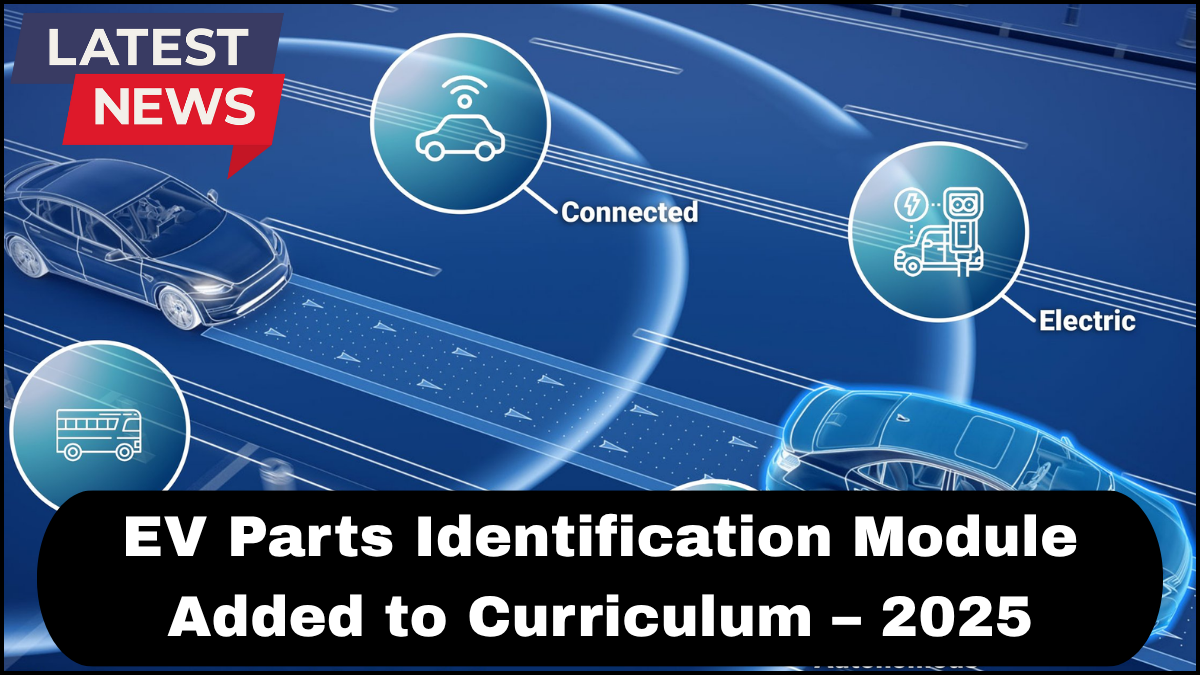In response to the surging demand for skilled professionals in the electric vehicle (EV) industry, educational institutions across the country are integrating a newly developed EV Parts Identification Module into their technical and vocational training programs starting in 2025. This forward-thinking move is aimed at equipping students with the technical know-how and practical experience needed to thrive in the rapidly evolving EV landscape.

Bridging the Skill Gap in EV Technology
The electric vehicle market is expanding at an unprecedented rate. According to recent industry reports, global EV sales are projected to exceed 30 million units annually by 2030. However, as the technology powering these vehicles advances, a critical skills gap is emerging. Many technicians and engineers lack hands-on experience with EV-specific components, hindering their ability to diagnose, repair, or optimize electric systems efficiently.
The EV Parts Identification Module directly addresses this issue by building a foundational understanding of core EV components and systems, including battery packs, electric drive units, power electronics, regenerative braking systems, and thermal management systems.
What the EV Parts Identification Module Covers
This module is more than just a theoretical overview. It’s a comprehensive, structured training segment that walks students through:
-
Identification and Functionality: Detailed study of critical EV parts such as inverters, onboard chargers, battery management systems (BMS), electric motors, and high-voltage cables.
-
Comparison with ICE Components: Contrasting EV parts with those found in internal combustion engine vehicles to highlight technological advancements and operational differences.
-
Safety and Handling Protocols: Teaching best practices for working with high-voltage components, ensuring students understand the risks and safety measures.
-
Diagnostics and Testing Tools: Introduction to specialized equipment used in EV maintenance, including thermal imaging cameras, insulation testers, and scan tools tailored for electric systems.
By embedding this module within existing automotive or electrical engineering curriculums, institutions aim to prepare students not only for today’s jobs but for the future of mobility.
Emphasis on Hands-On Lab Learning
One of the key strengths of the EV Parts Identification Module is its hands-on lab learning approach. Students won’t be confined to textbooks and PowerPoint slides. Instead, they’ll work directly with disassembled EV components and full-scale mock-ups, allowing them to:
-
Visually and physically inspect and assemble parts.
-
Practice installation and troubleshooting procedures in real-world scenarios.
-
Use augmented reality (AR) simulations to understand the internal workings of sealed systems like battery packs and drive units.
-
Analyze data from BMS and drive controllers using industry-standard diagnostic software.
This tactile learning model enhances retention, sharpens technical instincts, and builds confidence — crucial attributes for a workforce entering a high-tech, precision-driven industry.
Why This Matters for the Future of Automotive Education
Adding the EV Parts Identification Module into mainstream automotive programs marks a significant shift in educational priorities. It reflects the growing realization that EVs are no longer niche products — they’re the future of transportation. Schools that fail to adapt risk leaving their students underprepared for the next decade of employment opportunities.
Moreover, this initiative also opens doors for interdisciplinary learning. Students from electrical engineering, renewable energy, and robotics programs can all benefit from the insights offered by this module, promoting a more holistic understanding of clean mobility technologies.
Support from Industry Leaders
The rollout of this module in 2025 is being supported by partnerships with EV manufacturers, component suppliers, and certification bodies. These collaborations ensure that course content aligns with industry needs and that students gain exposure to current-generation components, not outdated prototypes.
Companies like Tesla, Rivian, and major Tier 1 suppliers are already providing surplus components, training materials, and guest lectures to support the implementation of the module. This symbiotic relationship also helps employers identify and recruit top talent from these programs early.
FAQs
Q1: Who can enroll in the EV Parts Identification Module?
A: The module is designed for students in automotive, mechanical, and electrical engineering programs, but it’s also open to professionals seeking upskilling or career transitions into EV-related roles.
Q2: Is prior EV knowledge required to take the module?
A: No. The course starts with basic principles and progresses to advanced diagnostics, making it accessible to both beginners and experienced technicians.
Q3: How long does the module take to complete?
A: The typical duration is 8 to 12 weeks, depending on the institution’s format and depth of lab integration.
Q4: Are certifications provided upon completion?
A: Yes. Most institutions offer a certificate of completion that is recognized by industry partners and can enhance employability.
Q5: Will students get to work on actual EVs?
A: Many programs partner with EV manufacturers or use donated vehicles and components to ensure students gain real-world experience alongside simulations and mock-ups.
click here to learn more